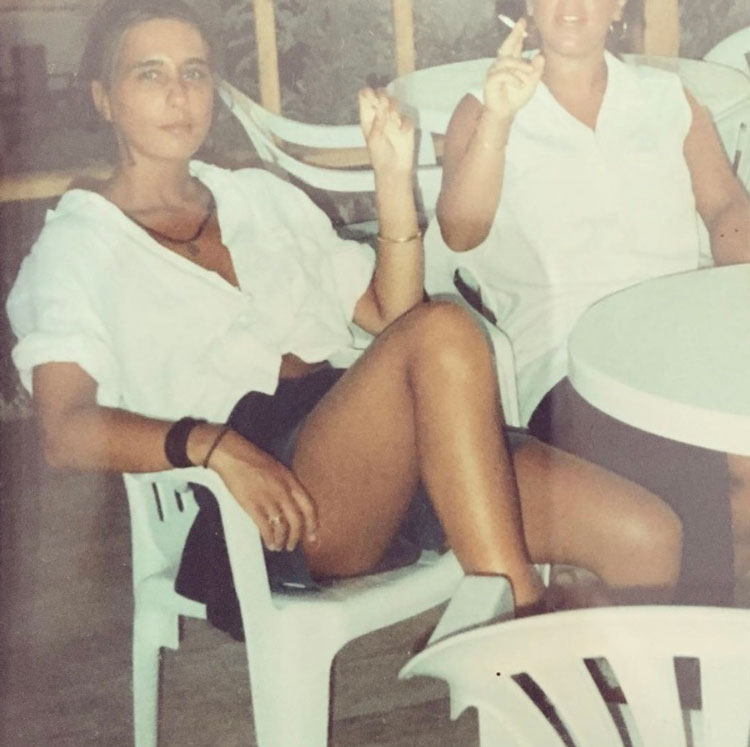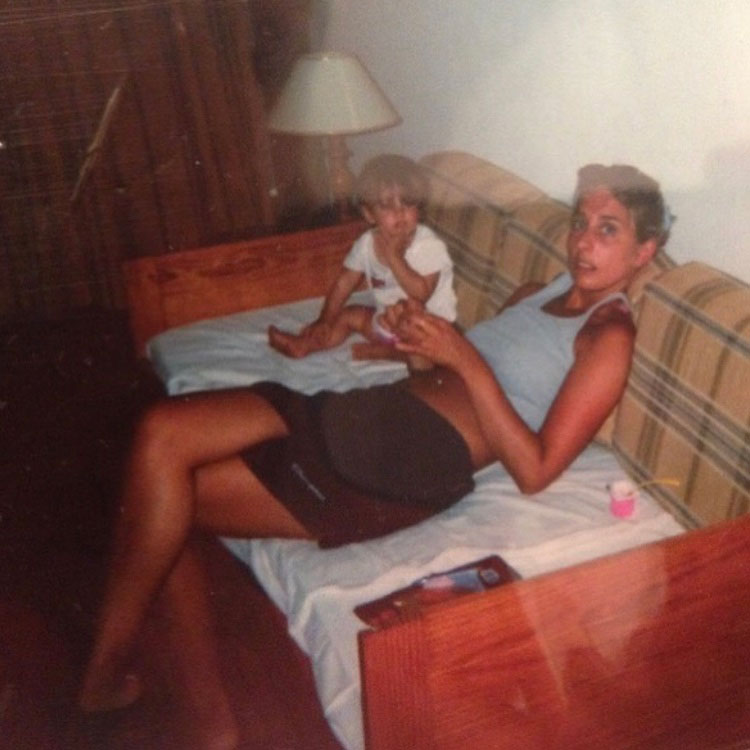Contributing editor Ella Citron-Thompkins has found the perfect – and sustainable – capsule collection in her mother’s wardrobe, as proven in the photos you’ll find below – all carefully sourced by Ella’s mother.
Is there any better feeling than leaving your favourite store with those brand new boots you’ve had your eye on for weeks, or ripping open a package that’s just arrived with an outfit ready for the weekend? Well obviously … opening up your mother’s wardrobe to find the perfect vintage piece sitting there, gathering dust, just waiting to be worn again!
Turning to my mum to share my frustration, her response usually sounds something along the lines of “Oh I’m sure I used to have one just like that, have a look in my wardrobe” and to my delight she has exactly what I’m after!
After flicking through old fashion magazines or watching a 90s rom com, I’m often left dreaming of clothing which I cannot seem to find anywhere. Much to my surprise, a pair of low rise jeans and a halter neck top are nowhere to be found online or on the high street these days. Turning to my mum to share my frustration, her response usually sounds something along the lines of “Oh I’m sure I used to have one just like that, have a look in my wardrobe” and to my delight she has exactly what I’m after! (Although I don’t know why I’m surprised as you only need to glance at her old photo albums to be reminded of how stylish she was). From a Missoni scarf and a classic black midi, to a pair of studded clogs and a tie-dye tube top, my mum’s old clothing has truly formed me the perfect capsule collection! While most of her hand-me-downs have been right up my street, the odd piece which hasn’t been quite to my taste has ended up on Depop or in a charity shop ready to find its next home.
In a world so threatened by climate change, not only is second hand clothing a more cost-effective alternative to buying something new, but it’s saving a perfectly intact piece of clothing from sitting at the bottom of your closet, or even worse ending up in landfill. Fashion is one of the biggest contributors to climate change and global warming, with over 300,000 tonnes of clothing going to waste each year in the UK, according to leading sustainability charity WRAP. Fast fashion, in particular, is at the forefront of this issue. Poor quality materials and inadequate production processes are employed to quickly produce large masses of clothing, designed purely to keep up with trends. However, trends come and go and, sadly, this business model just encourages consumers to buy items at cheap prices in order to keep up with the current trend, only to throw them away to make space for the next new thing. Unfortunately once these garments have been discarded they take a very long time to decompose which ultimately has a detrimental impact on our planet.
All of the pieces I’ve been handed down from my mum have been made with durable fabrics and efficient labour processes, this is evident through the use I still get out of them today, over 30 years later.
Clothing hasn’t always been made this way though and it doesn’t have to be. All of the pieces I’ve been handed down from my mum have been made with durable fabrics and efficient labour processes – this is evident through the use I still get out of them today, over 30 years later. With the fashion industry having such a significant impact on the environment, it is crucial that we make conscious fashion choices that are both ethical and sustainable, whether that be choosing to buy second-hand or spending time searching for brands that are putting the work in. If brands want to be taken seriously in today’s Gen Z market of eco-conscious consumerism, it is so important that they lead by example and produce their garments in sustainable ways that ensure they will stand the test of time, enabling them to be worn by generations to come. Although the initial price point of sustainable clothing may seem high due to the cost of environmentally friendly production and manufacture, if its going to last a long time then its definitely worth investing in that little bit extra. It’s hard to imagine a £5.00 crop top from Boohoo in circulation years down the line, but a garment made with consideration and care certainly could be!

As Gen Z change the rules of fashion, their obsession with appearing unique is becoming quite apparent and the idea of owning a one-off piece of clothing that nobody else will have is clearly quite appealing. We are all familiar with the movie cliche where two girls turn up to a party wearing the same red dress, it’s a nightmare right? So when someone asks you where you got your ultra cool jacket, it is a truly great feeling to effortlessly disclose that it was handed down to you and can’t be found in the shops nowadays. As we are now sharing so much of our lives through social media, style is a great way to express our identities online and vintage clothing allows us to do this while fulfilling the desire to stand out from the crowd. High street stores have witnessed, first-hand, this penchant for vintage fashion and many of them now try and cater to it through collections such as “re-worked” and “remix”. Try they might, but nothing beats the real thing! The stigma that once was attached to wearing second hand clothing simply does not exist anymore and I’d argue it has now transformed into a sought after trend.
With each crease, hole and stain, pre-loved garments hold memories in a way that new ones simply cannot.
We often look back to the 70s, 80s and 90s with a nostalgic admiration and one thing they are often remembered for is their feel-good fashion. As fashion does its cycle it’s no surprise that today we are taking inspiration from, and recreating, the styles of those times. Without even having been there this replication of style can transport you back to a time simply through the thoughts and feelings it evokes. Pop on a windbreaker jacket or some colourful cycling shorts and you’ll be taken right back to that 80s Roller Disco your parents went to as teens. There really is something so sentimental about wearing the exact same dress today that my mum wore in the 90s and automatically I feel connected to her and the experiences she had whilst wearing it. With each crease, hole and stain, pre-loved garments hold memories in a way that new ones simply cannot.
There really is something so sentimental about wearing the exact same dress today that my mum wore in the 90s and automatically I feel connected to her and the experiences she had whilst wearing it.
As a self-confessed shopaholic, I can honestly say that after years of purchases, from the teenage Topshop days to my more recent shift to thrifting, to this day some of my most favourite fashion pieces are courtesy of my mum’s youth, and I wouldn’t have it any other way.
Ella Citron-Thompkins (@ellakct) is a London-based fashion writer, also working within fashion communications and PR. She is passionate about encouraging sustainable ways of consuming fashion and discovering brands that put ethics and sustainability at the forefront of their practice. Read all of Ella’s pieces here.






